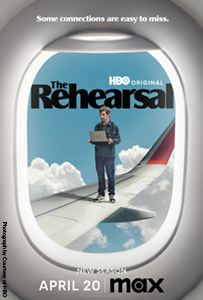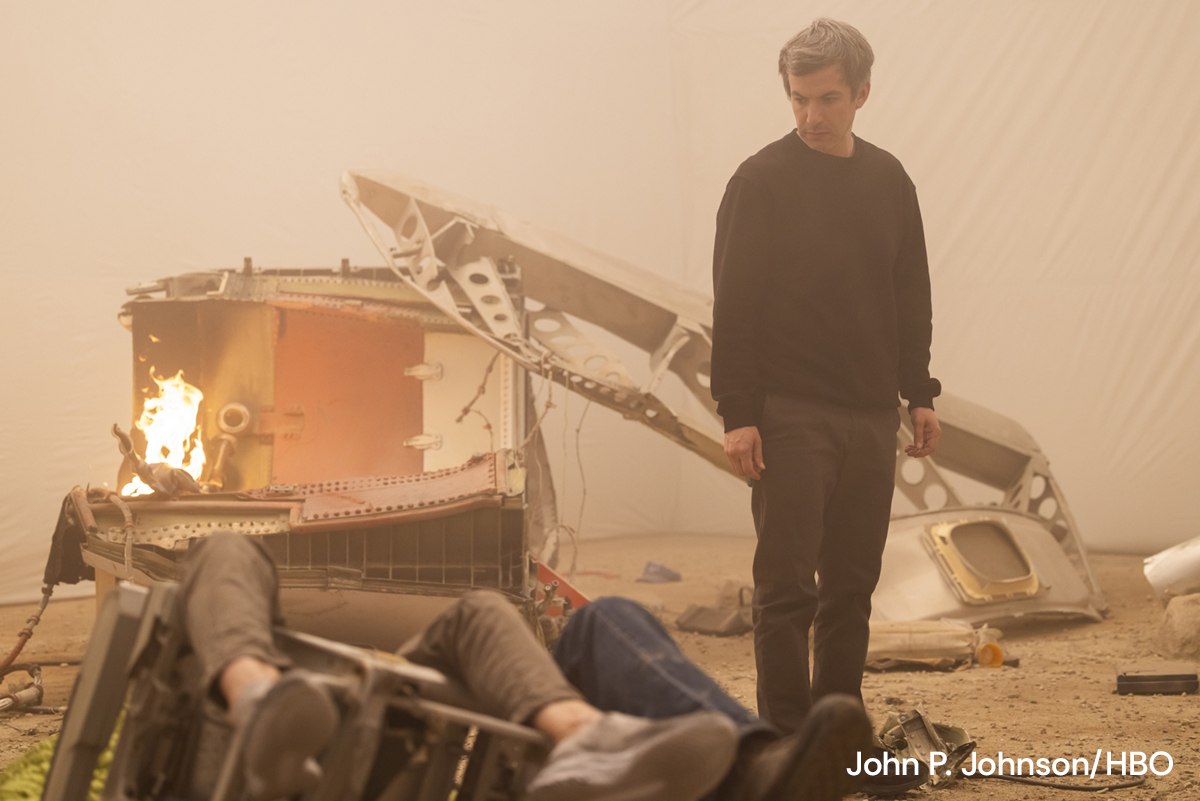The Rehearsal: Why fire service leaders should practice before they speak.
August 4, 2025The Rehearsal: Why fire service leaders should practice before they speak.
By John Vance
B Shifter Buckslip, August 5, 2025
 HBO recently aired its second season of a strange, brilliant and hilarious series called “The Rehearsal.” Comedian Nathan Fielder sets out to help people rehearse difficult real-life situations—conversations, confessions, flight deck emergencies—by building elaborate simulations and walking through possible scenarios in advance.
HBO recently aired its second season of a strange, brilliant and hilarious series called “The Rehearsal.” Comedian Nathan Fielder sets out to help people rehearse difficult real-life situations—conversations, confessions, flight deck emergencies—by building elaborate simulations and walking through possible scenarios in advance.
In one episode, Fielder suggests that air disasters might be reduced if flight crews rehearsed their interpersonal communication before ever meeting in the cockpit. It’s a thought-provoking hypothesis, especially when you consider the aviation concept of Crew Resource Management (CRM).
CRM is the idea that effective teamwork and communication between pilots (and crew) can prevent catastrophe. It evolved after a series of tragic crashes where miscommunication—not mechanical failure—was the root cause. CRM focuses on speaking clearly, listening actively, challenging assumptions and reducing power distance(1) between the captain and first officer. Sound familiar?
Here’s a kicker for Blue Card folks: Fielder’s dramatized re-enactment of Captain “Sully” Sullenberger’s life in “The Rehearsal” will be especially entertaining for anyone who attended the 2017 Blue Card Hazard-Zone Conference. Let’s just say Sully’s cool cockpit composure and use of the Recognition-Primed Decision Model(2) were hard to miss (not to mention the scene where baby Sully was receiving nutrition— that’s another conversation).

Nathan Fielder’s deep dive into Captain “Sully” Sullenberger’s history is not only entertaining but also insightful—especially for those of us who saw him speak at the 2017 Blue Card Hazard-Zone Conference.
“We Have a Communication Problem”
This show got me thinking about one of the most common phrases we hear in the fire service: “We have a communication problem.”
We say it like it’s the weather, an unavoidable condition of life. But the truth is, most communication problems are relationship problems in disguise. Or, they’re “lack of preparation” problems. Either way, poor communication doesn’t just show up out of nowhere on the fireground or in the firehouse. It’s the result of maintaining weak habits over time.
Departments that don’t regularly talk—about goals, expectations, standards, or even simple feedback—will crumble when confronted with even moderate stress. Trust me: When things get hard, all those unsaid things get very loud.
Say It Before You Have to Say It
I’ve been part of officer development sessions where we rehearsed what it should sound like to talk to a crew member about a difficult subject, e.g., performance issues, failure to follow policies, or a mistake on the fireground.
Let me tell you, it’s awkward. Especially for those of us who came up in a “Just fix it and move on” environment. We’re firefighters. We joke. We bond through sarcasm and shared suffering. So talking openly (let alone supportively) can feel unnatural to some. But it’s necessary.
That’s why I’m proposing an idea: We should rehearse.
Not in a dramatic, Nathan-Fielder-builds-you-a-simulation kind of way. But in a quiet, deliberate way. Before you walk into that critical conversation, rehearse it. Out loud. With a trusted peer. In the car. In your office. Or just in your head.

A major theme in the second season of The Rehearsal is that better pre-flight interpersonal communication among flight crews could help prevent certain air disasters—it’s a thought-provoking hypothesis.
Your Pre-Brief for Difficult Conversations
Think of it like an incident action plan. You wouldn’t run a fire without a size-up, IAP and a tactical worksheet. So don’t walk into a conversation that matters—an employee review, a counseling session, a crew critique—without a plan that has been rehearsed and written down.
Here’s a simple rehearsal algorithm for reversing conversational chaos:
1. Identify the Problem
Be honest and specific. What’s the real issue? Don’t lead with emotion or assumption. Lead with observation and fact.
Example: “We’ve noticed repeated slow turn-out times to calls from your crew over the last two weeks.”
2. Describe the Desired Outcome
What do you want to happen after this conversation? Clarity? Commitment? A change in behavior?Example: “We want to understand what’s causing the delay and work with you to fix it, so your crew is set up for success, and we fulfill our response-time goals.”
3. Bullet Point the Structure
Don’t script every word, but do outline the flow. Where will you start? How will you frame the issue? When will you stop talking and listen?
Example:
- Start with concern and shared purpose
- Describe what was observed
- Ask open-ended questions
- Offer support or feedback
- Discuss next steps
I seldom, if ever looked at these bullet points in the actual meeting, but having them in front of me offered the security of a script just in case I got off track.
4. Close with Clarity
Just like on the fireground, the close matters. You wouldn’t end an incident without going through the steps of Command Function 8. End your conversation with the same mindset. Always confirm mutual understanding.
Example: “So, we’re agreeing to check in again in a week, and you’ll follow up with the crew on expectations?”
This ensures both parties walk away knowing what happens next—and avoids the dreaded “they didn’t hear me” problem later.
Practice What You Speak
Leadership isn’t about having all the answers—it’s about being thoughtful, prepared and emotionally intelligent when it counts.
Rehearsing tough conversations may feel artificial at first, but it actually builds the kind of muscle memory we depend on in the fire service. We drill command simulations, fire attack, search, radio traffic and mayday procedures for a reason. Why wouldn’t we drill leadership language, too?
Communication in a crisis doesn’t improve by accident. Just like cockpit coordination in an emergency, it gets better when we lay the groundwork in advance—on the ground, on a good day, when no alarms are sounding.
The next time you feel a crucial conversation coming on, don’t wing it. Rehearse it. It might not get nominated for an Emmy like “The Rehearsal” did—but it might just make you a better leader.
References
1) Power distance is the extent to which power is unequally distributed between parties, and the level of acceptance of that unequal distribution, whether it is in the family, workplace, or other organizations.
2) The Recognition-Primed Decision Model suggests that decision-makers recognize patterns from past experience, match them to the current situation, and then quickly choose a course of action without comparing multiple options.

John Vance recently retired as a fire chief after 22 years in the front office. He is currently a battalion chief with the Chanhassen (Minn.) Fire Department; he has been a chief officer since 2002. He is a proud Blue Card lead instructor and an accredited chief officer through the Center for Public Safety Excellence. John has a bachelor’s degree in fire service management from Southern Illinois University and a certificate in executive management from the University of Notre Dame. He is the host of the B Shifter Podcast.



